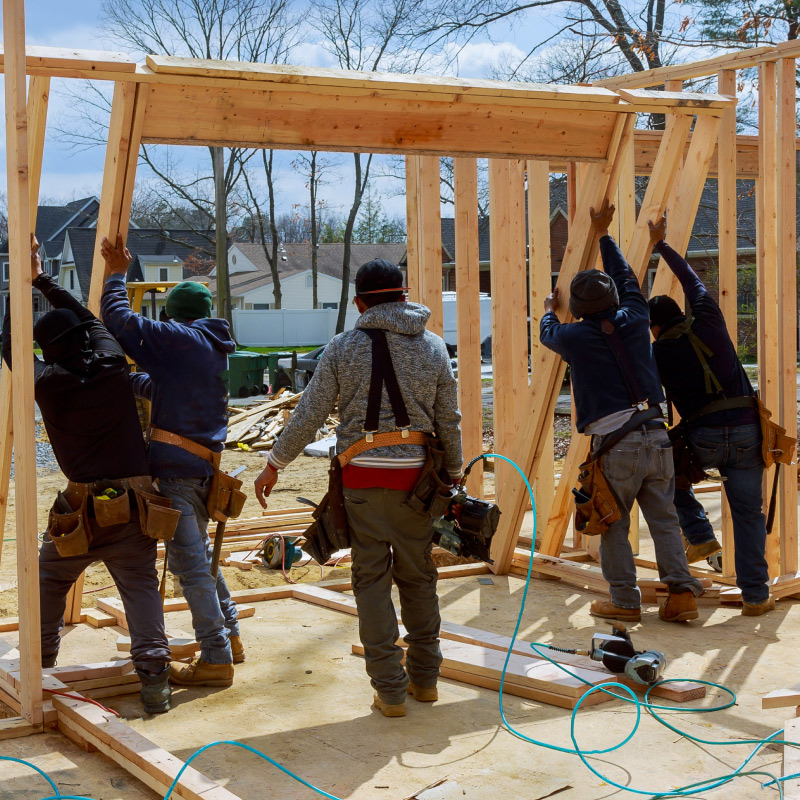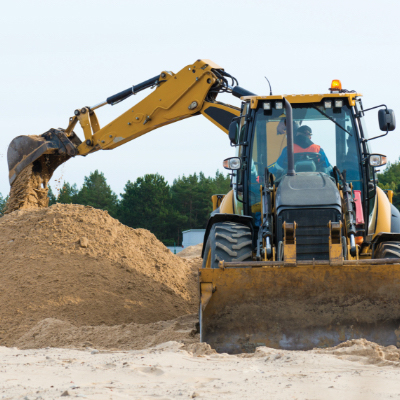Types of Excavators

Last updated January 27, 2025
Excavators are crucial at worksites as heavy construction vehicles equipped with arms and buckets for digging and earth-moving tasks. Excavation equipment comes in a variety of sizes and models for jobs that include construction, demolition and residential property improvements.
This guide reviews the different sizes and types of excavators as well as how to choose an excavator.
Table of Contents
Factors to Consider When Choosing an Excavator
Excavating Equipment Classifications
Types of Excavators
More Tools. More Products. More Perks.
Factors to Consider When Choosing an Excavator

Before choosing a digging machine for a job, determine the tasks you need to accomplish such as excavating trenches or lifting different types of material. Choose your excavator based on the following specifications.
- Bucket capacity: Determine the size of the bucket based on the weight and volume of material you will need to move for the job.
- Lift capacity: Determine the excavator’s safe lift capacity based on the material weight and how high you need to lift it.
- Digging depth: Determine the maximum depth the job requires the excavator to dig, as well as the reach provided by the parts of the excavator.
- Engine power: Make sure the engine and hydraulic systems are large and powerful enough for heavy-duty jobs.
- Vehicle weight: Confirm that the excavator has the right weight for both the job and the site conditions. Excavators that are too light can increase safety risks when moving large loads, while ones that are too heavy can damage your worksite.
- Worksite location: Crowded residential properties may need smaller, more maneuverable vehicles. Flat vs. uneven terrain also require different types of equipment.
Pro Tip: When determining the bucket and lift capacity for a job, be sure to consider if the type of materials makes a difference, as a fine material such as sand may have different requirements than large chunks of concrete. Choose attachments with right specifications for the job.
Excavating Equipment Classifications

A useful way to classify excavation equipment is by size. These are the different excavator sizes.
- Compact and mini excavators are smaller models that can both weigh up to 13,000 lb. and are suitable for tighter, more confined spaces. Mini excavators tend to be smaller and lighter than compact models. Both are fuel efficient but neither have the reach, lift capacity or digging depth of larger equipment.
- Mid-sized or “midi” excavators weigh between 15,400-22,000 lb. and have greater reach, power and digging depth than smaller versions.
- Standard excavators, also called “crawlers,” weigh between 22,000 and 99,000 lb. and are the most common excavators in construction. Unlike smaller models they can have hydraulic attachments but need more space to move.
- Large excavators can weigh up to 200,000 lb. and are designed for the most heavy-duty jobs. They require oversized trailers and trucks for transportation and can potentially damage a less durable worksite surface.
The following are the different types of mini excavators:
- 1-ton mini excavators have a maximum width of less than three feet, making them ideal for small job sites with narrow entrances.
- 1.5-2-ton mini excavators are used for heavy-duty landscaping and demolition jobs. With a maximum reach of up to 14 feet in select models, they can work on a large area without having to adjust the position of the equipment.
- 2.5-3-ton mini excavators can take on such tough jobs as foundation and demolition work. They come standard with a 24-inch bucket.
- 3.5-4-ton mini excavators are able to reach a maximum dig depth of 11 feet and provide significant support to most jobs.
Pro Tip: Before transporting your excavator to the job site, check all relevant local laws and regulations regarding the vehicle’s weight, width, length and height.
Types of Excavators

Most excavator models have a full range of rotation and buckets that face toward the operator. The following are the major types of excavators.
- Crawler excavators run on tracks, making them better for jobs on softer surfaces, hills or uneven terrain. They are slower than other models, but their balance and stability make them effective for landscape grading.
- Wheeled excavators are faster and more maneuverable on asphalt and other flat surfaces, allowing them to finish jobs more quickly. They are effective for roadwork but are less secure on uneven terrain.
- Dragline excavators use a long boom arm and cables to drag a bucket across a surface and gather materials. This larger, specialized excavator is primarily used for road excavations, pile driving and underwater jobs.
- Suction or vacuum excavators use a high-pressure suction pipe to remove soil or debris in cleanup applications. They are useful for delicate digging jobs such as excavating near buried utilities, but the narrow pipe makes them impractical for larger jobs.
- Skid steer excavators, also called skid steers, have booms and buckets that face away from operators, giving them more precision in narrow areas. Their maneuverability makes them ideal for crowded residential worksites.
- Long-reach excavators have arms that can reach 40-100 feet, making them ideal for digging in locations that are otherwise inaccessible. They are also common in demolition jobs but are difficult to use in tight places.
- Backhoe excavators, also called backhoe loaders, are designed with a digging bucket and arm on one end and a front loader for pushing on the other. Backhoes can be fitted with more attachments than standard excavators.
Pro Tip: Most wheeled excavators can be driven on city streets and do not need separate transportation to the job site. However, always consult your local city and county codes.
More Tools. More Products. More Perks.

Be more competitive and boost your bottom line with Pro Xtra, The Home Depot’s loyalty program built for Pros. Sign up today to access the enhanced Pro Online Experience, built with the online business tools and time-saving features Pros need.
Use our large equipment rental services for access to heavy-duty equipment for construction jobs.



























